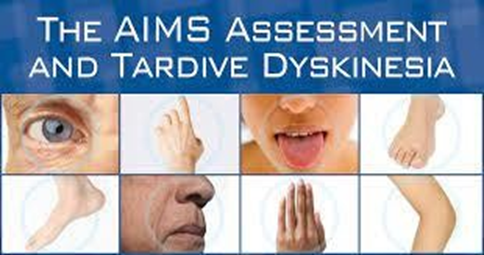Which assessment tool is used to monitor clients for Tardive Dyskinesia?
AIMS Scale
Hamilton Scale
Braden Scale
Morse Scale
The Correct Answer is A
Choice A rationale: The AIMS Scale refers to the Abnormal Involuntary Movement Scale and is used in the assessment of patients for the presence of involuntary movements across body regions. The score ranges from zero which denotes the absence of dyskinesia and four which stands for severe, maximal amplitude and persistence of the abnormal movements during the examination period. It is also used to monitor clients with tardive dyskinesia.
Choice B rationale: the Hamilton scale is a multiple-item questionnaire used in the assessment of clients for depression and provides a guide for patient recovery evaluation.
Choice C rationale: the Braden Scale is used in the assessment of clients for the risk of pressure ulcers.
Choice D rationale: the Morse Scale is a Fall Risk Assessment tool used in assessing the probability of a client sustaining a fall.

Nursing Test Bank
Naxlex Comprehensive Predictor Exams
Related Questions
Correct Answer is A
Explanation
Choice A rationale: The therapeutic range of lithium is generally considered to be 0.6-1.5 mEq/L. However, some patients may require higher or lower levels depending on their individual response to the medication and their clinical condition. Lithium has a narrow therapeutic range hence the blood level of the drug should be closely monitored to minimize the risk of toxicity and sub-therapeutic effects.
Choice B rationale: 0.1-0.5 is too low hence the drug will provide sub-optimal effects thus providing inadequate mood stabilization.
Choice C rationale: 0.2-0.5 is too low hence the drug will provide sub-optimal effects thus providing inadequate mood stabilization.
Choice D rationale: 0.4-1.6 the lower limit is too low and may result in sub-therapeutic effects while the upper limit is too high and increases the risk of lithium toxicity which can manifest as nausea, vomiting, tremors, seizures, and death in severe cases.
Correct Answer is ["A","B","C"]
Explanation
Choice A rationale: this response is dismissive of the patient’s feelings and concerns and does not acknowledge the patient’s reality and perspective. It implies that the patient is overreacting and may make the client feel judged and ignored.
Choice B rationale: this response is intrusive and prescriptive since the patient’s reasons and preferences are not considered. it assumes that the patient has a husband and that they have a good relationship together which may not be the case.
Choice C rationale: this response is accusatory and confrontational while implying that the patient’s behavior was wrong and unacceptable. Furthermore, it focuses on the past rather than the present or the future which is relevant in this case. It also makes the patient feel guilty and ashamed which may impair their ability to open up hence ineffective care.
Choice D rationale: This response is empathic and validating. It reflects the patient's feelings and shows understanding and compassion. It does not judge or minimize the patient's emotions, and it invites the patient to share more if they wish. This response could make the patient feel heard, supported, and respected.
Choice E rationale: this response encourages the patient to open up and express their thoughts and feelings. This makes the patient feel valued and empowered thus allowing them to share their feelings at their own pace.
Whether you are a student looking to ace your exams or a practicing nurse seeking to enhance your expertise , our nursing education contents will empower you with the confidence and competence to make a difference in the lives of patients and become a respected leader in the healthcare field.
Visit Naxlex, invest in your future and unlock endless possibilities with our unparalleled nursing education contents today
Report Wrong Answer on the Current Question
Do you disagree with the answer? If yes, what is your expected answer? Explain.
Kindly be descriptive with the issue you are facing.
